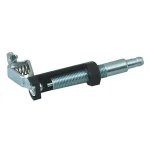i have a 1996 Evinrude 150.
It cranks and engine runs pretty well - as long as I continue to hold the key in the on position.
So - I cranked it and hold key in starting position and bam - engine runs. Let go of the key - instantly dies.
Have replaced the ignition switch and starter. Battery is connected properly. The starter being engaged is the only thing keeping it running when I hold the key.
Any suggestions?
I have some some other ideas to try but I want to see if I’m missing something in my thought patterns.
It cranks and engine runs pretty well - as long as I continue to hold the key in the on position.
So - I cranked it and hold key in starting position and bam - engine runs. Let go of the key - instantly dies.
Have replaced the ignition switch and starter. Battery is connected properly. The starter being engaged is the only thing keeping it running when I hold the key.
Any suggestions?
I have some some other ideas to try but I want to see if I’m missing something in my thought patterns.





















